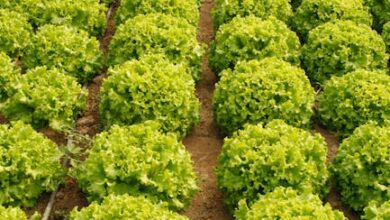The Subtle Language of Petals: Flowers as Climate Sentinels

We’ve all seen them. The tenacious dandelion pushing through a sidewalk crack, the splash of wildflowers brightening a highway median, or a hillside draped in poppies. Flowers are ubiquitous, a constant backdrop to our lives, signaling the changing seasons. We might admire their fleeting beauty or marvel at their simple life cycle: bud, bloom, wilt, seed. But what if these delicate blossoms held a deeper narrative, a secret language speaking directly to the health of our planet, offering a glimpse into our shared future?
It turns out, they do. And an innovative project is now showing us exactly what that future might look like.
The Subtle Language of Petals: Flowers as Climate Sentinels
Before peering into the future, let’s appreciate the present. Flowers are incredible data displays, their very architecture shaped by the climate around them. A flower’s form is a visual diary of its environmental conditions, if you know how to read it.
Ever noticed variations in a flower’s vibrancy from one year to the next? In a dry year, petals might show a noticeable shift in pigmentation. Conversely, a warmer year could lead to a larger, more robust bloom. Even something as invisible as ozone levels leaves a mark, causing flowers to increase their ultraviolet-absorbing pigment as protection.
This isn’t just observation; it’s a deep biological response. Take anthocyanins, for example. These red or indigo pigments aren’t just for show; they’re powerhouse compounds providing crucial antioxidants and photoprotectants. They’re a plant’s built-in defense, helping it tolerate climate-related pressures like prolonged droughts.
So, if flowers already respond in such intricate ways to current climate shifts, what happens when those shifts accelerate? What will the flowers of tomorrow look like when faced with unprecedented environmental challenges?
Gazing into the Botanical Crystal Ball: The Plant Futures Project
This very question lies at the heart of “Plant Futures,” a remarkable artistic research project. It offers a tangible, year-by-year vision of how a single flower species might evolve between 2023 and 2100. It’s a powerful invitation to confront the complex, long-term ripple effects of our warming world, brought to life through the most delicate of subjects.
From Forest Floor to Future Vision: A Helsinki Revelation
The genesis of Plant Futures began during an artist residency in Helsinki, where designer Annelie Berner collaborated with biologist Aku Korhonen. Exploring the ancient Haltiala forest, Berner encountered the Circaea alpina, a tiny flower once rare, but now more common as local temperatures have risen. Yet, its habitat is fragile; it requires shade and moisture, typically provided by spruce trees which are declining due to new forest pathogens.
This paradox sparked a crucial question for Berner: Could the Circaea alpina not just survive, but truly adapt and thrive, despite climate uncertainty? If its shaded, moist bogs transform into bright, dry meadows, how would it persist? This tiny flower, with its precarious future, became the project’s grounding point.
Data-Driven Blooms: Marrying Science and Speculation
To answer her profound question, Berner delved deep into scientific research. At the Luomus Botanical Collections, she meticulously studied historical Circaea samples dating back to 1906, cross-referencing their attributes with historical climate data to understand past responses to temperature and precipitation.
Working with data artist Marcin Ignac from Variable Studio, the project then transitioned to future speculation. They developed a sophisticated 3D model of the current Circaea alpina. This model was dynamic, directly linked to climate projections. As factors like rising temperatures, fluctuating precipitation, and increased carbon dioxide levels were fed into the algorithm, the flower’s physical parameters—size, color, vein density, UV pigments, and tendency for double blooms—began to shift, forming a visual representation of climate adaptation.
It’s a fascinating blend of scientific rigor and artistic foresight, where hard data informs imaginative speculation. The resulting collection of 78 flowers, one for each year from 2023 to 2100, offers a compelling visual timeline.
A Timeline of Transformation: The Evolving Circaea
Let’s take a closer look at some snapshots from this imagined future, illustrating the intricate dance between flower and environment:
- 2025: Subtle Beginnings
The Circaea alpina is only slightly larger than its typical form, a testament to a warmer summer. Otherwise, it remains largely familiar, a gentle hint of the changes to come.
- 2064: The Emergence of Resilience
Mid-century sees a notably bigger flower with more petals, driven by increases in carbon dioxide levels and temperature. Its bull’s-eye pattern, composed of UV pigment, becomes larger and somewhat “messier”—a defensive response to increased ozone and solar radiation. A second tier of petals—a “double bloom”—appears, reflecting growing uncertainty within future climate models. Nature, it seems, hedges its bets.
- 2074: A Blush of Protection
Just a decade later, the flower takes on a distinct pinker hue. This isn’t cosmetic; it’s an antioxidative response, a survival mechanism triggered by consecutive dry days and higher temperatures. Its size continues to increase, influenced by elevated carbon dioxide. The double bloom persists, underscoring ongoing climate unpredictability.
- 2100: The Apex of Adaptation
By the turn of the next century, the future Circaea alpina is a truly transformed entity. Its veins are densely packed, a potential sign of improved water transport—a technique leaves use to combat severe droughts. This dense venation could also enhance the flower’s ability to attract pollinators in an era of worsening air quality, which can degrade floral scents. It’s a dual-purpose adaptation, born of necessity.
Each year, from 2023 to 2100, the speculative flower shifts. Its size, color, and form become direct reflections of rising temperatures, increased carbon dioxide levels, and altered precipitation patterns. These individual flowers are then “preserved” in 10-centimeter plexiglass cubes, allowing viewers to see them in a comparative, layered view—a tangible timeline of botanical evolution.
The Profound Message of Future Blooms
The “Plant Futures” project, spearheaded by Annelie Berner, isn’t just a scientific study or an artistic exhibition. It’s a powerful narrative, a silent but potent warning and a glimmer of hope. By visualizing the subtle yet significant transformations of a single, unassuming flower, it forces us to confront the profound, long-term impacts of climate change on the natural world.
It reminds us that even the most delicate forms of life are engaged in an ongoing, desperate dance of adaptation. While the beauty of a flower might seem ephemeral, its struggle for survival in the face of environmental upheaval is a story as old as time, now playing out on an accelerated timeline. Perhaps, by seeing these future blooms, we can be motivated to protect the delicate balance of our ecosystems today, ensuring that the flowers of tomorrow can continue to tell stories of life, not just survival.





